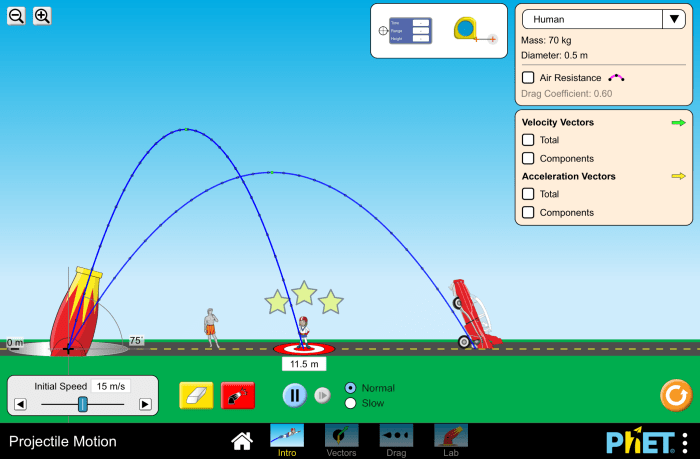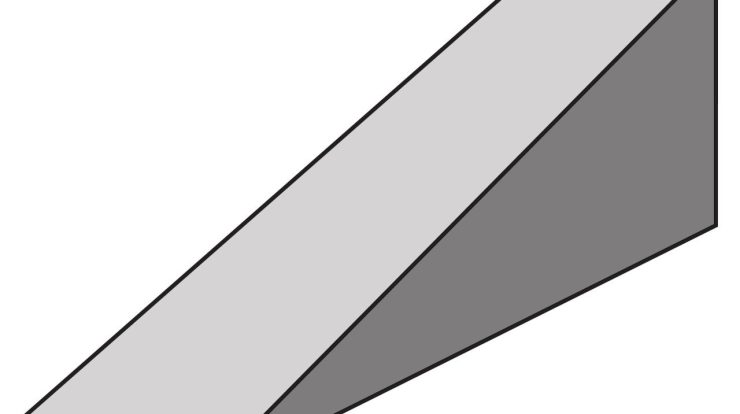Inquiry lab projectile motion answer key: Embark on a scientific adventure to unravel the mysteries of projectile motion, where every launch and trajectory holds a key to understanding the fundamental principles of physics. Join us as we explore the intricacies of displacement, velocity, and acceleration, delving into the captivating world of projectiles and their captivating paths.
Our inquiry lab experiment provides a hands-on approach to projectile motion, guiding you through the experimental setup, data collection, and meticulous analysis. Discover the secrets of trajectory as we unravel the relationships between initial velocity, angle of projection, and the resulting path of projectiles.
Prepare to be captivated by the interplay of forces and motion, as we delve into the fascinating realm of projectile motion.
Projectile Motion Basics
Projectile motion describes the movement of an object thrown or launched into the air, subject to the force of gravity. It involves understanding displacement, velocity, and acceleration, and considering factors like initial velocity and angle of projection to determine the trajectory of the projectile.
Variables in Projectile Motion
- Displacement: The change in position of the projectile from its starting point.
- Velocity: The rate of change in displacement, including both speed and direction.
- Acceleration: The rate of change in velocity, in this case, primarily due to gravity (9.8 m/s² downward).
- Initial Velocity: The velocity of the projectile at the moment of launch.
- Angle of Projection: The angle at which the projectile is launched relative to the horizontal.
Trajectory of a Projectile
The trajectory of a projectile is a parabolic path determined by its initial velocity and angle of projection. The highest point of the trajectory is called the apex, and the projectile follows a symmetric path on either side of the apex.
Inquiry Lab Experiment
Experimental Setup
The inquiry lab experiment involves launching a projectile, such as a ball or toy car, at different angles and velocities. The setup includes:
- Projectile launcher with adjustable angle and velocity settings
- Target or measuring device to record the projectile’s displacement
- Measuring tape or motion sensor to measure distance and velocity
- Computer or data logger to record and analyze data
Procedures, Inquiry lab projectile motion answer key
- Set up the projectile launcher at a known angle and velocity.
- Launch the projectile and record its displacement using the target or measuring device.
- Repeat the experiment for different angles and velocities.
- Record and analyze the data to determine the projectile’s displacement, velocity, and acceleration.
Data Analysis and Interpretation

Calculating Displacement, Velocity, and Acceleration
Displacement can be calculated using the formula: Displacement = (Initial Velocity- Time) + (0.5 – Acceleration – Time²) .
Velocity can be calculated using the formula: Velocity = (Initial Velocity) + (Acceleration- Time) .
Acceleration is constant in projectile motion due to gravity and is equal to 9.8 m/s².
Error Analysis
It is important to consider sources of error in the experiment, such as measurement inaccuracies, air resistance, and friction. Error analysis helps determine the reliability of the results and identify areas for improvement.
Question & Answer Hub: Inquiry Lab Projectile Motion Answer Key
What is the significance of the inquiry lab projectile motion experiment?
The inquiry lab projectile motion experiment provides a hands-on, experiential approach to understanding the principles of projectile motion. It allows students to actively engage with the concepts, fostering a deeper comprehension through practical application.
How does the answer key contribute to the learning process?
The answer key serves as a valuable resource for students, offering detailed explanations and calculations for each question. It provides a roadmap for understanding the concepts behind projectile motion, clarifying any misconceptions and reinforcing the learning experience.
What are the potential applications of the concepts learned in the projectile motion inquiry lab?
The concepts learned in the projectile motion inquiry lab have far-reaching applications in various fields, including sports, engineering, and physics demonstrations. By understanding the principles of projectile motion, individuals can analyze and predict the trajectory of objects, optimize performance in sports, and design innovative solutions in engineering.
